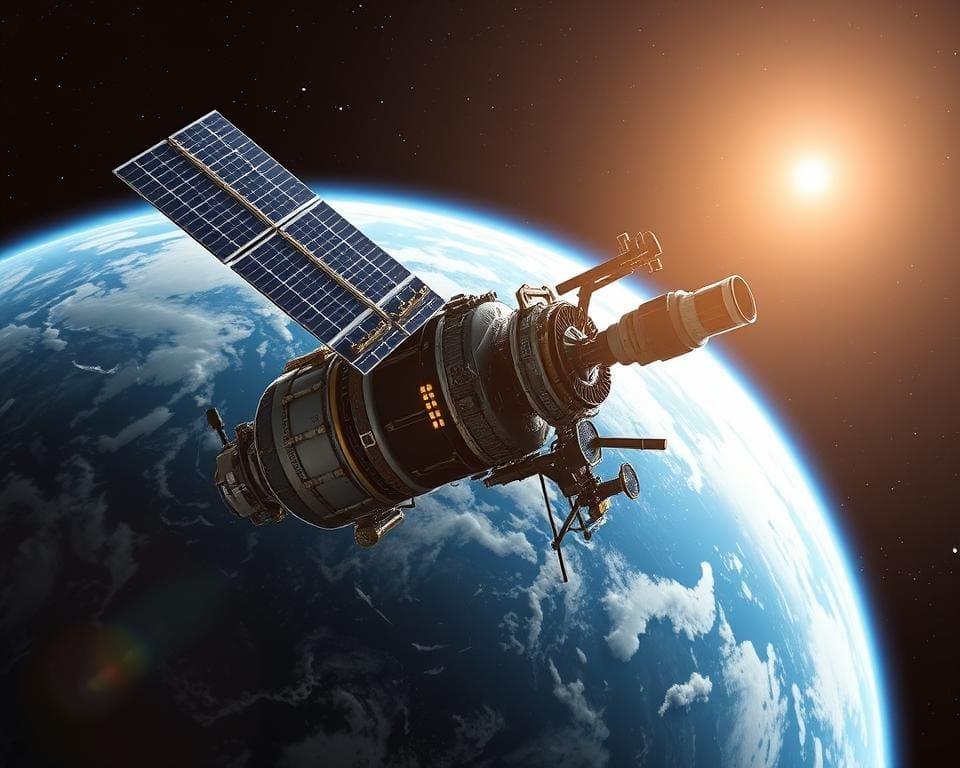The landscape of global communication has undergone a profound transformation, largely thanks to satellite technology. In recent decades, this innovative communication technology has enabled real-time data transmission, connecting individuals and organisations across continents like never before. The Role of Satellite Technology in Global Communication cannot be overstated, as it bridges the gaps in areas where traditional networks often fall short.
Key players such as Intelsat, SES, and Eutelsat have been at the forefront of these advancements, expanding the horizons of what is possible in satellite communication. This article will explore the significance of satellite technology in enhancing connectivity, especially in rural and remote regions where reliable communication remains a challenge. Embrace this journey through the universe of satellite services, and discover how they are shaping our world.
Understanding Satellite Technology and Its Importance
Satellite technology plays a pivotal role in shaping modern communication. By deploying satellites into orbit, we gain the ability to transmit information across vast distances, connecting individuals and businesses globally. Understanding this technology opens doors to its profound implications in various sectors, including telecommunications, broadcasting, and navigation.
Defining Satellite Technology
Satellite technology encompasses the deployment and operation of artificial satellites for a range of purposes, including communication, navigation, and Earth observation. These satellites facilitate the transmission of essential data, enabling timely exchanges of information, voice, and video signals among users across different locations. This integration of satellite communication within everyday life exemplifies the impact of contemporary communication technology.
History of Satellite Communication
The history of satellite communication dates back to the 1960s, marked by the launch of Telstar, the first commercial communications satellite. This event ushered in a new era in communication technology, allowing for innovations such as live television broadcasts and international telephone calls. The journey from those early days to the sophisticated satellite systems we rely on today highlights the evolution of communication methods on a global scale.
Types of Satellites Used in Communication
In satellite communication, several types of satellites serve distinct functions, each tailored to specific communication needs. The primary types include:
- Geostationary Satellites (GEO): These satellites remain stationary over a specific point on Earth, providing reliable and extensive coverage for television and radio broadcasting.
- Medium Earth Orbit Satellites (MEO): These are primarily used for navigation systems like GPS, allowing for precise location tracking and guidance.
- Low Earth Orbit Satellites (LEO): These satellites deliver internet access with minimal latency, enhancing connectivity, particularly in underserved areas.
Understanding the types of satellites and their unique advantages provides insight into the complexities of satellite communication and its critical role in our interconnected world.

The Role of Satellite Technology in Global Communication
Satellite technology plays a crucial role in fostering global connectivity across various sectors. With the ability to transcend geographical limitations, it has become a fundamental pillar of modern communication networks. This section explores how satellite technology enhances global connectivity and significantly impacts rural and remote areas.
Enhancing Global Connectivity
Satellite technology fosters global connectivity by establishing links between users located in diverse regions, overcoming the challenges posed by vast distances and difficult terrains. High-throughput satellites (HTS) have revolutionised communication capabilities, enabling increased data capacity and improved efficiency. Industries such as telecommunications and media benefit from these advancements, as there is a growing need for bandwidth to support more extensive user bases. The speed and reliability of satellite services contribute to a more connected world, ensuring that everyone can access essential information and services.
The Impact on Rural and Remote Areas
In rural and remote areas, satellite communication serves as a lifeline where traditional infrastructure often falls short. Access to satellite internet opens doors to numerous opportunities, enhancing education, healthcare, and economic development. Initiatives like the Connecting the World campaign are pivotal in bridging digital divides through satellite services, enabling even the most isolated communities to tap into state-of-the-art communication technologies. This connectivity not only improves the quality of life but empowers individuals and communities, allowing them to participate in the global conversation.
Technological Advancements in Satellite Communication
The field of satellite communication is witnessing rapid technological advancements that are transforming how we connect globally. As our reliance on efficient communication networks increases, the evolution from analogue to digital methods has been a game-changer. This transition has substantially enhanced the capabilities of satellite networks, allowing for stronger signals and improved data transmission. Techniques such as frequency division multiple access (FDMA) and time division multiple access (TDMA) have optimised bandwidth usage, enabling simultaneous communication for multiple users without interference, thus paving the way for more robust satellite services.
Evolution of Communication Networks
The recent advancements in communication networks signify a monumental leap forward in satellite technology. Innovations designed to improve satellite efficiency have allowed for greater accessibility and reliability in transmission. Just as the adoption of digital communication has refined our broadcasting mediums, it has laid down a strong foundation for the multi-faceted uses of satellites in contemporary society, ensuring that even remote areas gain improved connectivity.
Innovations Shaping the Future of Satellite Services
Looking ahead, innovations such as low Earth orbit (LEO) constellations are transforming the landscape of satellite communication. Providers like Starlink and OneWeb are at the forefront, promising high-speed internet access to vast regions while effectively addressing latency and bandwidth limitations. Additionally, the integration of artificial intelligence and machine learning in managing satellite operations signifies a leap towards smarter resource management. This evolution heralds a promising future of satellite technology, ensuring it meets the growing demands of a digital world.









